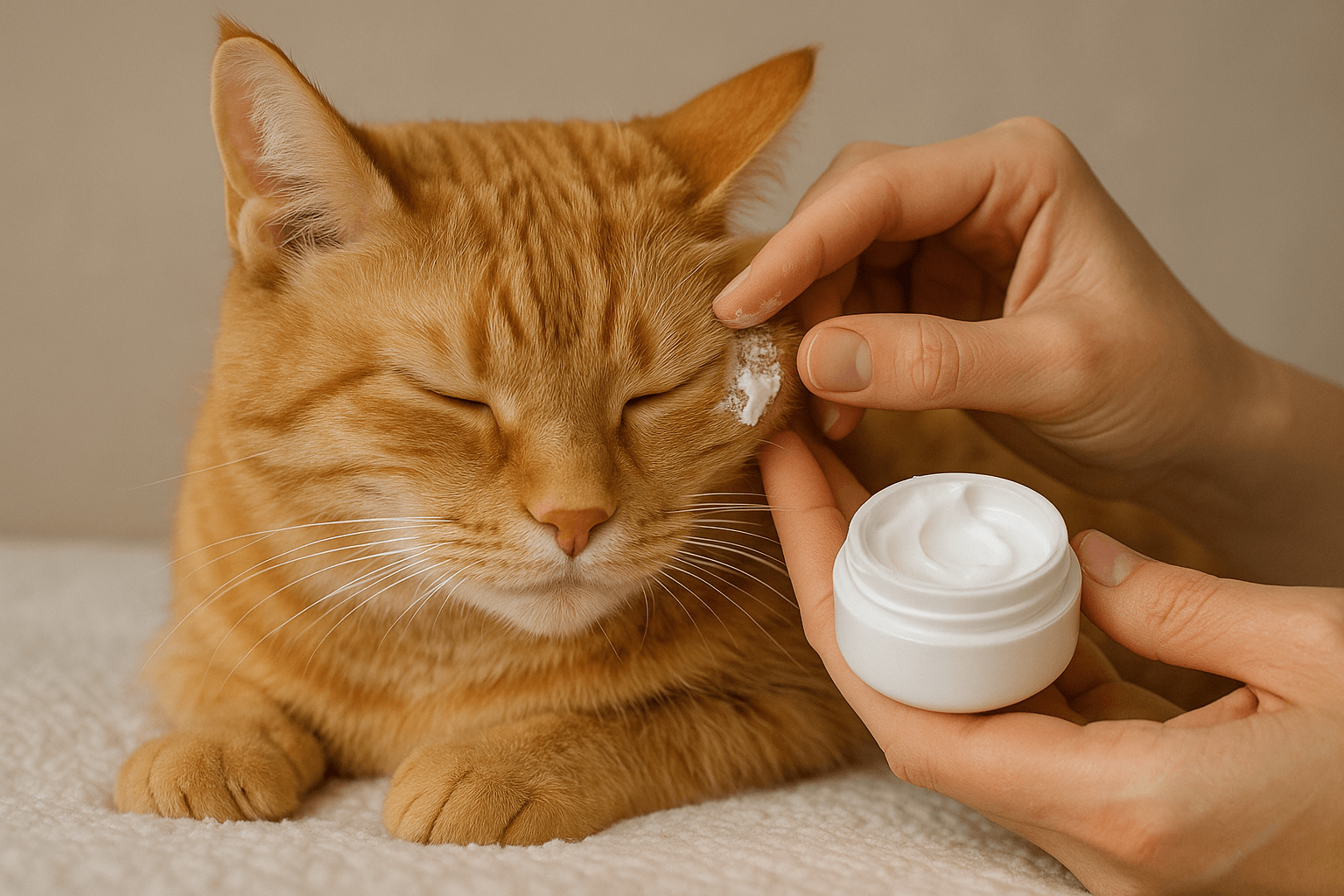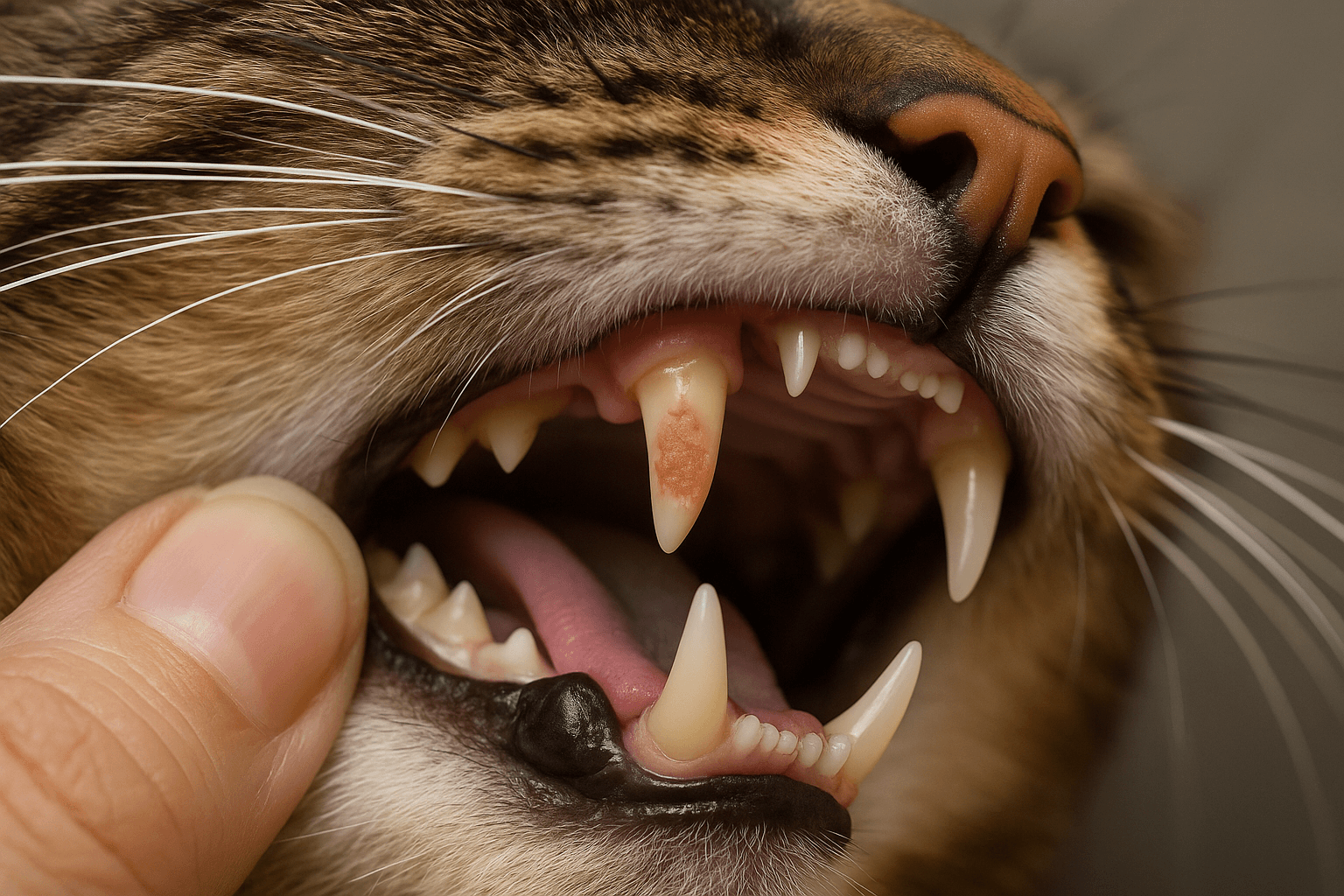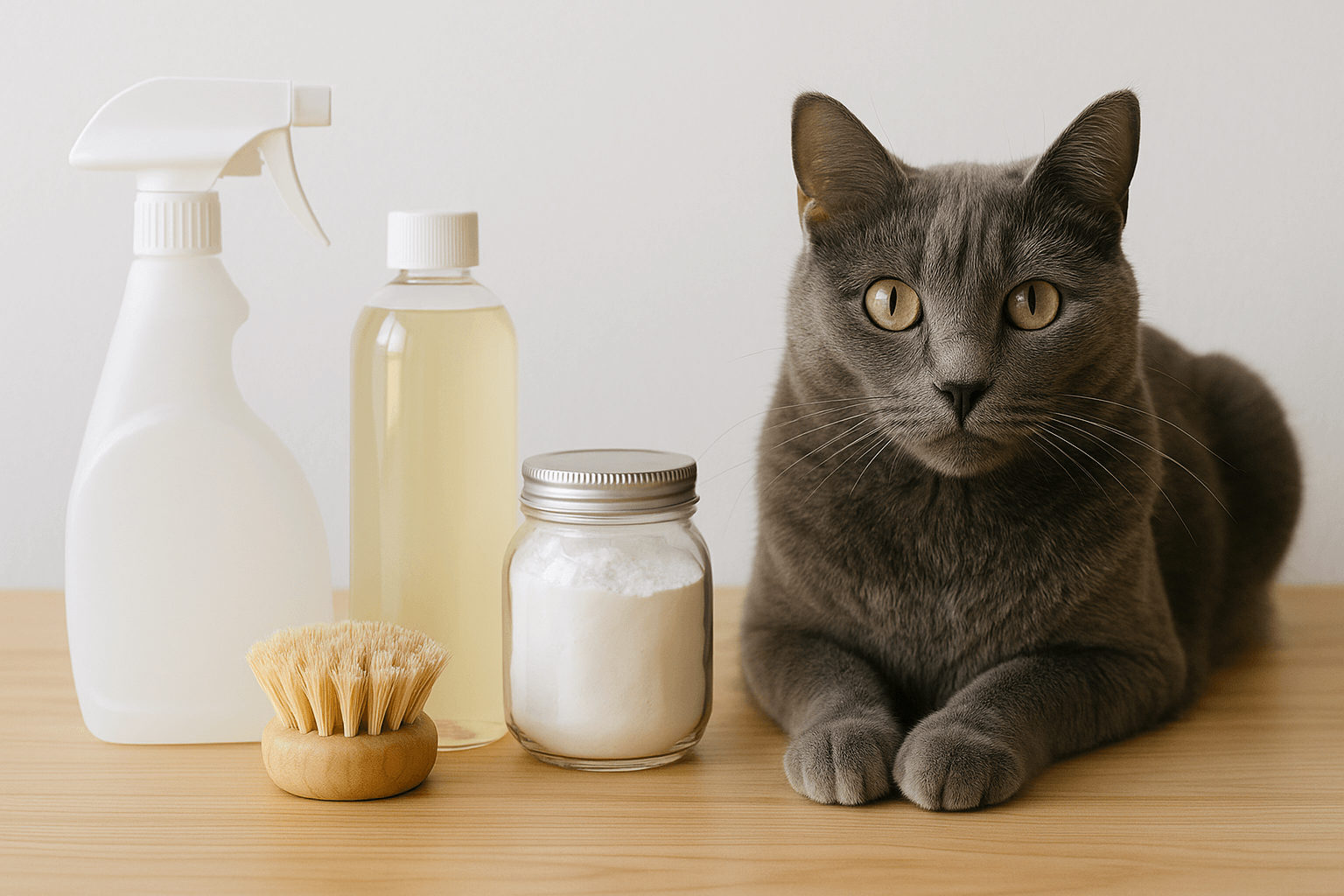Understanding Cat Swollen Paw: Causes and Home Remedies
Cats are curious creatures, and their playful nature often leads them into situations that can cause minor injuries. One common issue cat owners may encounter is a swollen paw. While it might seem like a small problem, a swollen paw can indicate underlying issues such as infections, allergies, or even foreign objects lodged in the pad. As a responsible pet owner, it’s crucial to address this promptly to ensure your feline friend remains comfortable and healthy.
In this blog post, we’ll explore effective home remedies for a cat swollen paw, helping you provide immediate care while determining whether professional veterinary attention is necessary.
Common Causes of a Swollen Paw in Cats
A swollen paw in cats can arise from various causes, ranging from minor irritations to more serious conditions. Understanding these causes is the first step toward effective treatment. Here’s a list of potential reasons why your cat’s paw might be swollen:
Injury or Trauma
Cats are active animals, and their paws can get hurt during play or exploration. A sprain, cut, or bruise might lead to swelling.Foreign Objects
Sharp objects like thorns, glass shards, or splinters can become embedded in your cat’s paw, causing irritation and swelling.Infections
Bacterial or fungal infections can develop if a wound isn’t cleaned properly, leading to inflammation and discomfort.Allergic Reactions
Some cats may experience allergic reactions to substances like cleaning products, plants, or insect bites, resulting in a swollen paw.Arthritis or Joint Issues
Older cats or those with pre-existing health conditions might develop joint problems, which can manifest as swelling in the paws.
Identifying the root cause of the swelling is essential for choosing the right remedy. If you’re unsure about the source, consult your veterinarian for a thorough diagnosis.
Home Remedies for a Swollen Paw
If your cat’s swollen paw doesn’t appear to be severe, you can try some home remedies to alleviate discomfort and promote healing. Always ensure your cat is calm and comfortable before attempting any treatment. Here are some effective remedies:
Warm Compress
Applying a warm compress can help reduce swelling and soothe pain. Use a clean cloth soaked in warm water and gently press it against the affected area for 5–10 minutes.Epsom Salt Soak
An Epsom salt soak can draw out impurities and reduce inflammation. Dissolve a tablespoon of Epsom salt in warm water and soak your cat’s paw for a few minutes. Ensure your cat doesn’t lick the solution afterward.Antiseptic Wash
Clean the paw with a mild antiseptic solution to prevent infection. Dilute the solution with water and use a cotton ball to gently clean the area.Coconut Oil Application
Coconut oil has natural antibacterial properties. Apply a small amount to the swollen area to moisturize and protect the skin while promoting healing.Rest and Elevation
Encourage your cat to rest and avoid putting pressure on the swollen paw. Elevating the paw slightly can also help reduce swelling.
These remedies can provide relief, but monitor your cat closely. If the swelling persists or worsens, seek veterinary care immediately.
Check this guide 👉The Magic of Cat Paws: Best 7 Expert Tips!
Check this guide 👉How Many Paws Does a Cat Have? Best 7 Expert Tips!

Symptoms to Watch For | Possible Causes |
|---|---|
Redness and warmth around the paw | Infection or injury |
Limping or reluctance to walk | Sprain or fracture |
Excessive licking or chewing | Allergic reaction or irritation |
Visible cuts or puncture wounds | Foreign object or trauma |
Swelling accompanied by fever | Systemic infection |
Preventive Measures to Avoid Swollen Paws
Prevention is always better than cure, especially when it comes to your cat’s health. Taking proactive steps can minimize the risk of your cat developing a swollen paw. Here are some preventive measures you can implement:
Regular Paw Checks
Inspect your cat’s paws frequently for cuts, bruises, or foreign objects. Early detection can prevent complications.Safe Environment
Keep your home and yard free of sharp objects or hazardous materials that could harm your cat’s paws.Proper Grooming
Trim your cat’s nails regularly to prevent overgrowth, which can lead to discomfort or injury.Use Pet-Friendly Products
Opt for non-toxic cleaning products and avoid using harsh chemicals that could irritate your cat’s skin.Monitor Outdoor Activities
If your cat spends time outdoors, supervise their activities to ensure they don’t encounter dangerous surfaces or objects.
By adopting these preventive measures, you can significantly reduce the likelihood of your cat experiencing a swollen paw.
When to Seek Veterinary Care
While home remedies can be effective for minor issues, certain signs indicate the need for professional veterinary attention. Recognizing these signs ensures your cat receives timely treatment. Here’s what to look out for:
Persistent Swelling
If the swelling doesn’t subside after a few days of home care, it’s time to consult a vet.Signs of Pain
Excessive meowing, limping, or aggression when touched are indicators of significant discomfort.Fever or Lethargy
A swollen paw accompanied by fever or unusual tiredness might signal a systemic infection.Pus or Discharge
The presence of pus or foul-smelling discharge suggests an advanced infection requiring medical intervention.Difficulty Walking
If your cat struggles to put weight on the affected paw, it could indicate a fracture or severe injury.
Prompt veterinary care is essential in these cases to prevent further complications and ensure your cat’s well-being.
Signs Your Cat’s Swollen Paw Needs Immediate Attention
While some cases of a swollen paw can be managed at home, others require urgent veterinary care. Recognizing the signs of a serious issue can help you act quickly to protect your cat’s health. Here are some red flags to watch out for:
Severe Limping or Inability to Walk
If your cat is unable to put any weight on the affected paw, it could indicate a fracture or severe injury.Visible Deformity
A misshapen or oddly positioned paw suggests a possible dislocation or broken bone.Swelling That Spreads
If the swelling extends beyond the paw to the leg, it may indicate a systemic infection or inflammatory condition.Unusual Aggression or Hiding
Cats in significant pain often retreat or become aggressive when approached.Loss of Appetite or Energy
A lack of interest in food or play can signal that your cat is feeling unwell due to the swelling.
If you notice any of these signs, don’t delay—seek professional veterinary care immediately. Early intervention can make a significant difference in your cat’s recovery.
Natural Remedies to Soothe Your Cat’s Swollen Paw
If your cat’s swollen paw appears minor and isn’t accompanied by alarming symptoms, natural remedies can provide relief. These options are gentle and safe, making them ideal for mild cases. Consider the following natural solutions:
Aloe Vera Gel
Aloe vera has soothing and anti-inflammatory properties. Apply a small amount to the swollen area, ensuring your cat doesn’t ingest it.Chamomile Tea Compress
Brew chamomile tea, let it cool, and use it as a compress to reduce swelling and calm irritation.Turmeric Paste
Mix turmeric powder with water to create a paste. Apply it to the paw to harness its antibacterial and anti-inflammatory benefits.Apple Cider Vinegar Rinse
Dilute apple cider vinegar with water and use it to clean the paw gently. Its antimicrobial properties can help prevent infection.Calendula Ointment
Calendula is known for its healing properties. Apply a pet-safe calendula ointment to promote recovery.
These natural remedies can offer comfort, but always monitor your cat’s response. If there’s no improvement, consult your veterinarian for further guidance.
Tips for Keeping Your Cat Calm During Treatment
Treating a swollen paw can be stressful for both you and your cat. Keeping your feline friend calm during the process is essential for effective care. Here are some tips to help your cat stay relaxed:
Create a Quiet Environment
Choose a peaceful, distraction-free space for treatment to minimize stress.Use Positive Reinforcement
Reward your cat with treats or praise after each step of the treatment process to build trust.Wrap Your Cat in a Towel
Gently swaddle your cat in a soft towel to prevent sudden movements and keep them secure.Stay Calm Yourself
Cats can sense your emotions. Maintain a calm demeanor to reassure your pet.Offer Distractions
Provide toys or a favorite blanket to divert your cat’s attention during treatment.
By keeping your cat calm, you can make the treatment process smoother and less stressful for everyone involved. Remember, patience and gentleness go a long way in ensuring successful care.
FAQ
What should I do if my cat’s paw is swollen?
First, inspect the paw for visible injuries or foreign objects. You can try a warm compress or antiseptic wash as a home remedy. If the swelling persists, consult a vet.
Can I use human medication for my cat’s swollen paw?
No, human medications like ibuprofen or aspirin can be toxic to cats. Stick to vet-approved treatments.
Can I use human medication for my cat’s swollen paw?
Minor swelling may resolve within a few days with proper care. Severe cases might require weeks of treatment.
Why does my cat keep licking its swollen paw?
Licking is a natural response to discomfort or irritation. However, excessive licking can worsen the condition.
Is a swollen paw an emergency?
It depends on the severity. If your cat shows signs of pain, fever, or difficulty walking, seek immediate veterinary care.
Caring for Your Cat’s Swollen Paw: A Final Word
A swollen paw in your cat can be concerning, but with the right knowledge and tools, you can provide effective care at home. From warm compresses to preventive measures, there are several ways to address this issue and ensure your furry companion stays happy and healthy. Remember, while home remedies can work wonders for minor cases, never hesitate to consult a veterinarian if you notice persistent swelling or other alarming symptoms. By staying vigilant and proactive, you can help your cat recover quickly and prevent future occurrences. After all, their comfort and well-being are worth every effort!
Cat Dry Skin Treatment: Best 7 Expert Tips! Discover effective remedies and expert advice to soothe your cat’s dry skin, restore their coat’s shine, and ensure lasting comfort with simple, actionable solutions.
Understanding Cat Tooth Resorption: Best 7 Expert Tips! Discover causes, symptoms, and treatment options to protect your cat’s dental health and ensure a pain-free life.
Cerebellar Hypoplasia in Cats: Best 7 Expert Tips! Discover expert advice on caring for cats with cerebellar hypoplasia, managing symptoms, and creating a safe, loving environment for your wobbly feline friend.
Cat-Safe Cleaning Products: Best 7 Expert Tips! Discover safe, non-toxic cleaning solutions to protect your cat’s health while keeping your home spotless and fresh.





